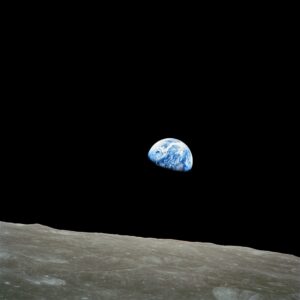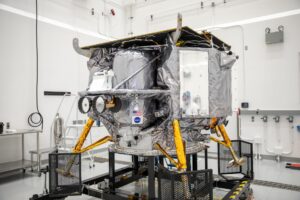Shortly after returning to the pad in November, the vehicle weathered a rare, late-season category one hurricane named Nicole. A week later, Artemis I leapt from the shoulders of our past endeavors, the hard work of thousands of people over years and years of commitment to reach for the moon and stars. While simultaneously turning night into day as she powered into the early morning skies over Florida’s Space Coast on November 16, 2022 at 1:47am EST.
As I sit here waiting to return to the pad once more to collect my remaining camera gear located inside the gates of 39B, I do so eagerly awaiting what was captured. In pursuit of our mission at Cosmic Perspective, the placement of high-speed cinematic cameras and specialized audio gear capable of capturing the sound of a rocket launching up close was carried out on L-3. For two and a half days our gear was in the field waiting for SLS to lift off.
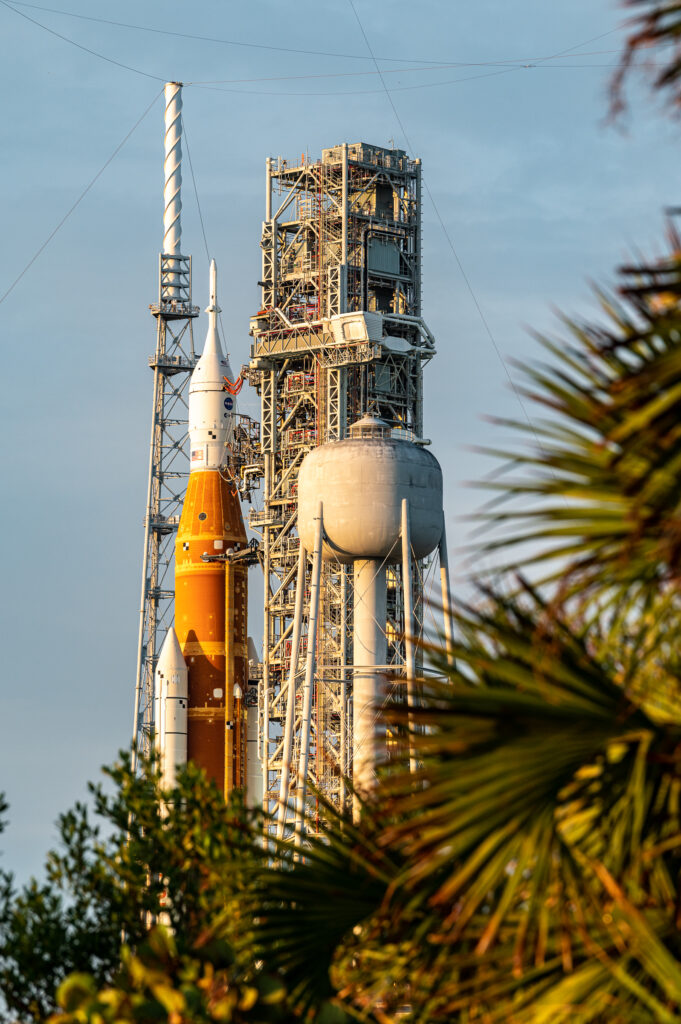
NASA’s Space Launch System on Pad 39B on L-1.
Photo Credit: John Pisani / Cosmic Perspective
NASA's Space Launch System Rocket
Experience the sounds and sights of launch with stunning visuals from the Kennedy Space Center Press Site and launch pad.
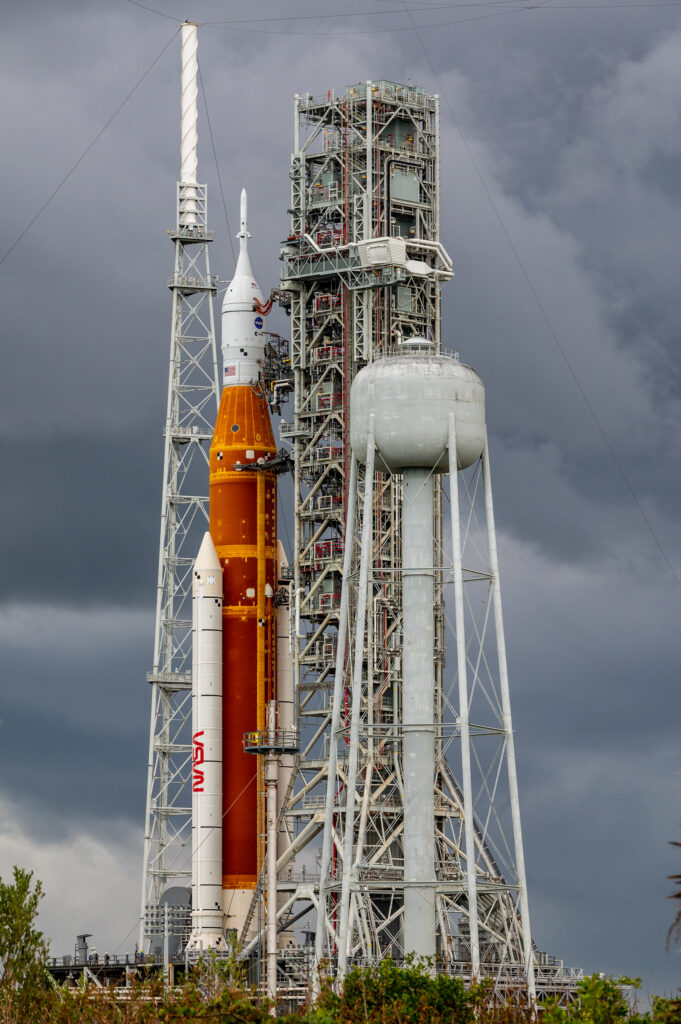
A nice morning setting remote cameras turned into a stormy afternoon.
Photo Credit: John Pisani / Cosmic Perspective
Why do we do the things we do? Endlessly chasing rockets, sometimes for days on end, or in the middle of the night, and interviewing astronauts and other bright minds from space companies around the world? The Cosmic Perspective mission lives within us.
I was setting remote cameras on an afternoon where KSC was still doing tours at a spot near the pad. Visitors from around the world looking out at SLS across the gorgeous landscape, learning more about it as a tour guide informed them about the heritage of the rocket that stood there before them. .
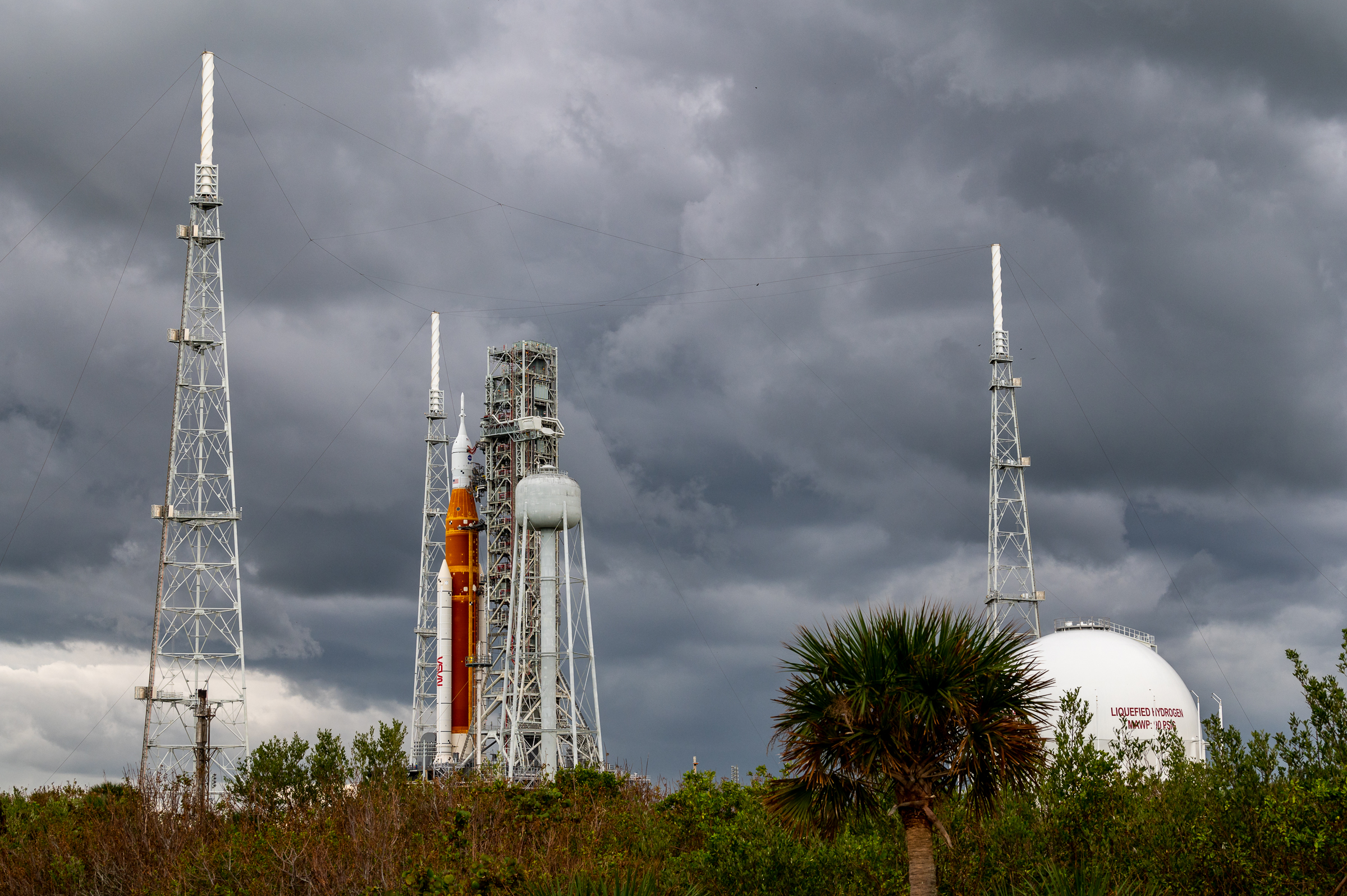
A wide shot on a stormy afternoon of SLS at 39B on L-3
Photo Credit: John Pisani / Cosmic Perspective
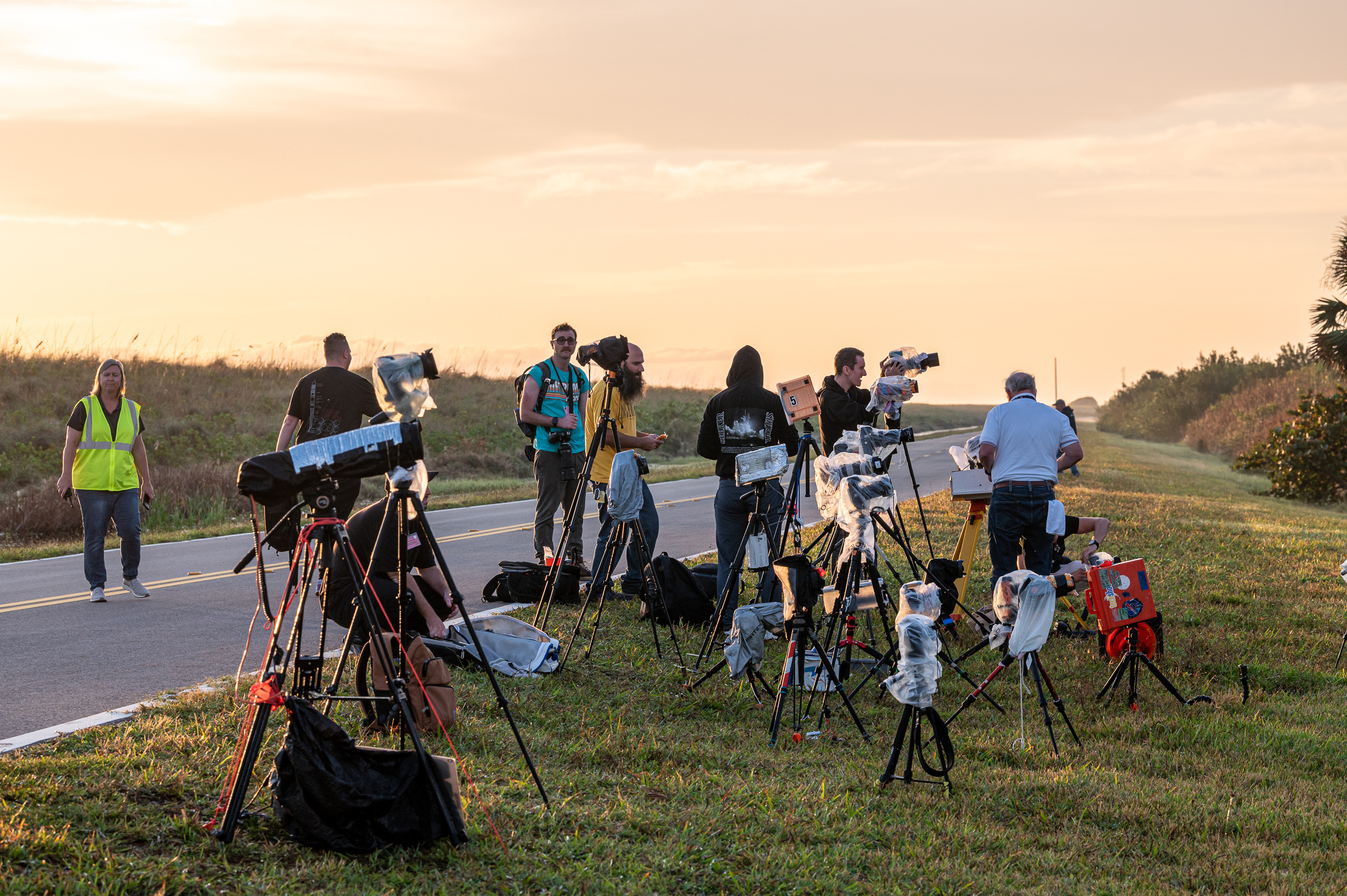
Members of the digital media crowd tend to cameras on L-1 along Cape Rd just east of 39B.
Photo Credit: John Pisani / Cosmic Perspective
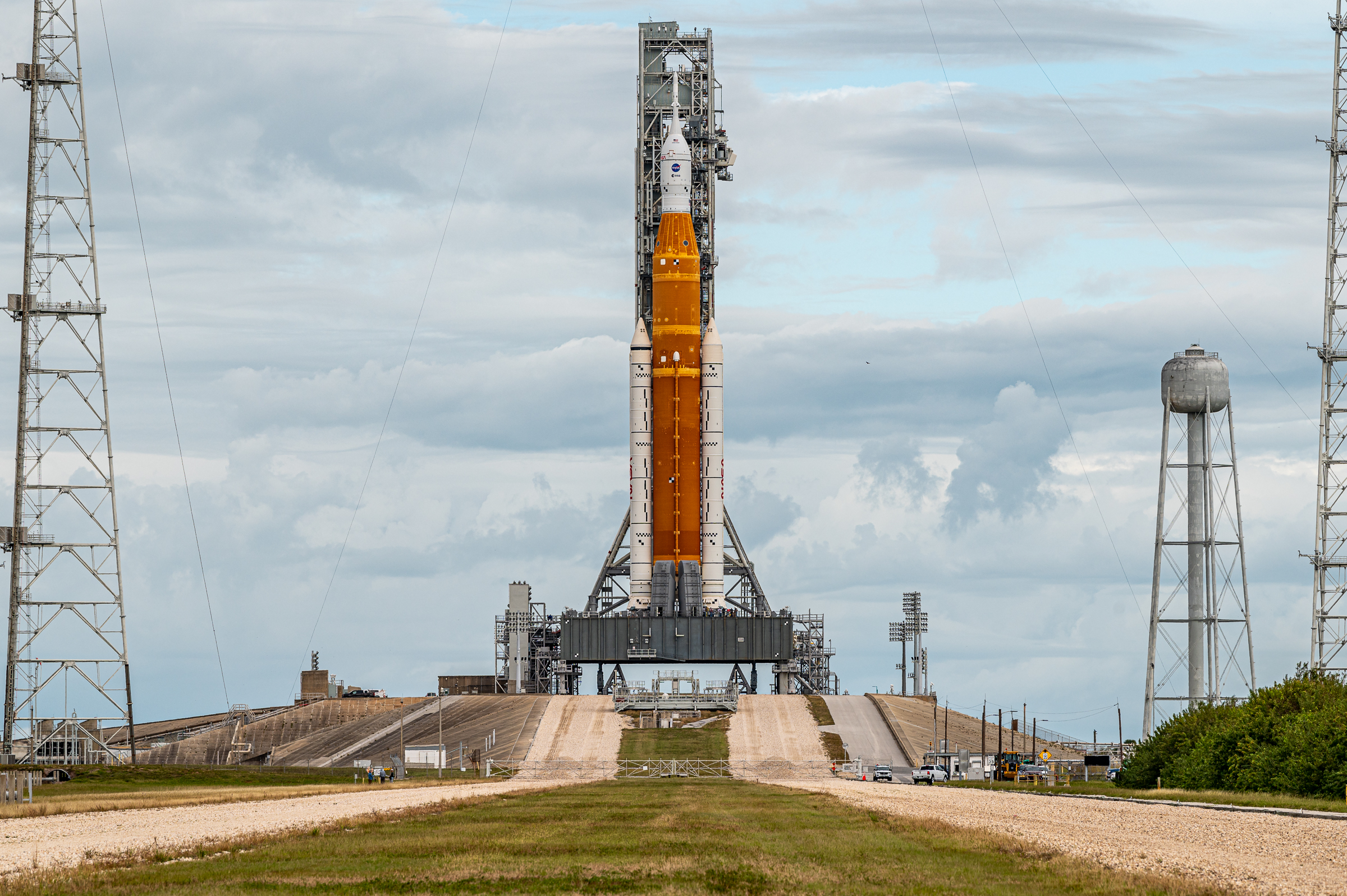
Looking down the crawler way with NASA’s Space Launch System rocket on pad 39B. L-1
Photo Credit: John Pisani / Cosmic Perspective
I have a nine year-old son that could not sleep the night of launch. I made sure to FaceTime him as the go for launch was given so he could step into the backyard and witness the beginning of the Artemis generation. He’s obsessed with space, not sure where he gets it from, haha, but the important thing is that he was and has been inspired by the launch of Artemis 1.
NASA’s SLS rocket may not be the most cost-effective solution for immortality amongst the stars, but in my opinion, it is a step in the right direction. With it will hopefully come a generation of inspired individuals, both like-minded and committed to making life multi-planetary. Regardless, it will take many new technologies and hundreds of companies with thousands of employees to move this massive industry forward. While SLS relies on legacy tech, newer technology from companies building up and down the cape will contribute to exploration within the Artemis program.
For us, well, the gear worked as expected, but our battle against moisture was thwarted. As for our cameras inside the pad perimeter, the fate of them was dormancy during the time of launch. Our battery drained to zero in the hours before launch. This unfortunate discovery is all apart of it though. We win some and lose some. One of those wins was audio captured from inside the pad. The way the ambient sound fades into a rocket coming to life and the eventual ignition of the four main engines, followed by the ignition of the solids and the sounds of the explosive bolts going off to release SLS from its perch is just plain amazing. While it has been a tough year of innovation, trial and error. And while I was bummed at the lack of pad footage, I have an experience of a lifetime to look back on.
Launch Day—
Cosmic Perspective and Everyday Astronaut often work together to bring the world the best possible views of launches. Launch day preps began early in the day on L-1 with setting up LUNA at the press site. LUNA (Locational Uplink / Networking Asset) is an old news van turned into a rocket-chasing, 4K streaming, gear hauling workhorse that literally broadcasted the launch of Artemis to the world via YouTube. This purpose-built van was a dream of Tim’s and after months of building, attending multiple launch attempts and a couple launches in the fog, SLS finally gave us the show we have been waiting for.
Our team of five worked hard wiring up cameras, setting lights, troubleshooting technology, and a multitude of other things. The prep work for this moment was days and months even. Working out kinks, optimizing our setup and finding different ways to do things. The culmination of this teamwork resulted in a beautiful livestream with our own cameras as well as live 4K feeds from NASA.
As day turned into night and the clock ticked on, I found myself roaming around the press site, talking with strangers and helping with whatever was needed. I think my favorite part about helping out with LUNA was just being able to support the team, but also learn. I have to be honest, while I might line up some great shots and take some great photos, I am in a new world in this production space. I can’t thank the EDA team enough for the warm welcome.
I wish I had more to say about the launch, other than how bright it was, or how loud, but the truth is simple, the launch of Artemis 1 initiated the beginning of the Artemis generation. As I sit here typing up the last few lines, now at home, the Orion spacecraft has journeyed around the moon and is headed back home to planet Earth.
During its journey, Orion’s test flight has beamed incredible imagery back home for the world to view. And while this first flight was an un-crewed test, I can not wait for Artemis 2 and the crew that will be on board. The imagery is fantastic, but hearing about the human experience will be incredible. So here’s to Artemis, the first mission and the ones that follow. Here’s to the companies that support it. Here’s to the people that enable this multi-national collaboration. Here’s to immortality amongst the stars, and here’s to the Artemis generation. I hope we make it to the moon, Mars and beyond.
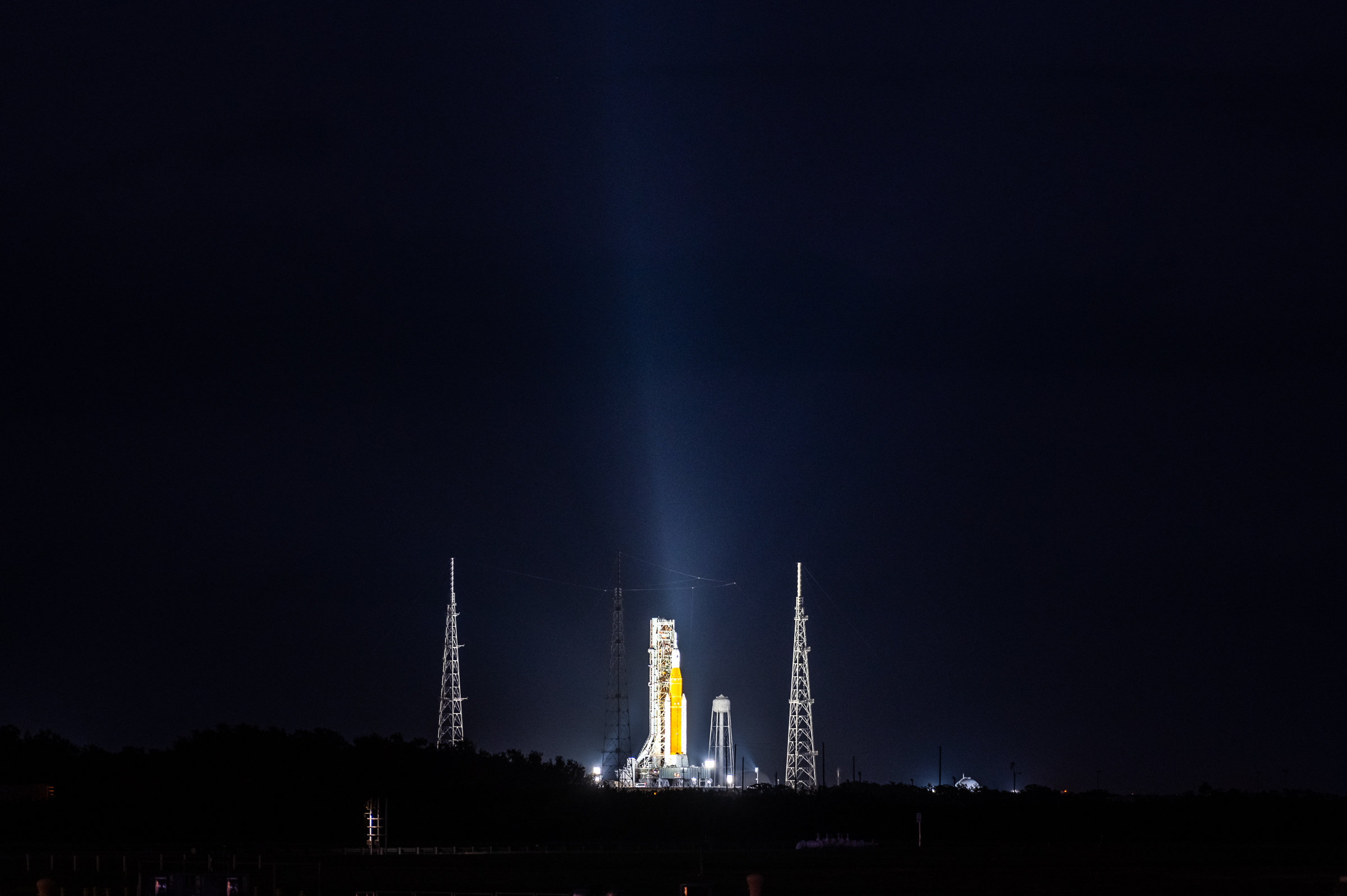
Night time views from the Press Site of SLS on L-2
Photo Credit: John Pisani / Cosmic Perspective
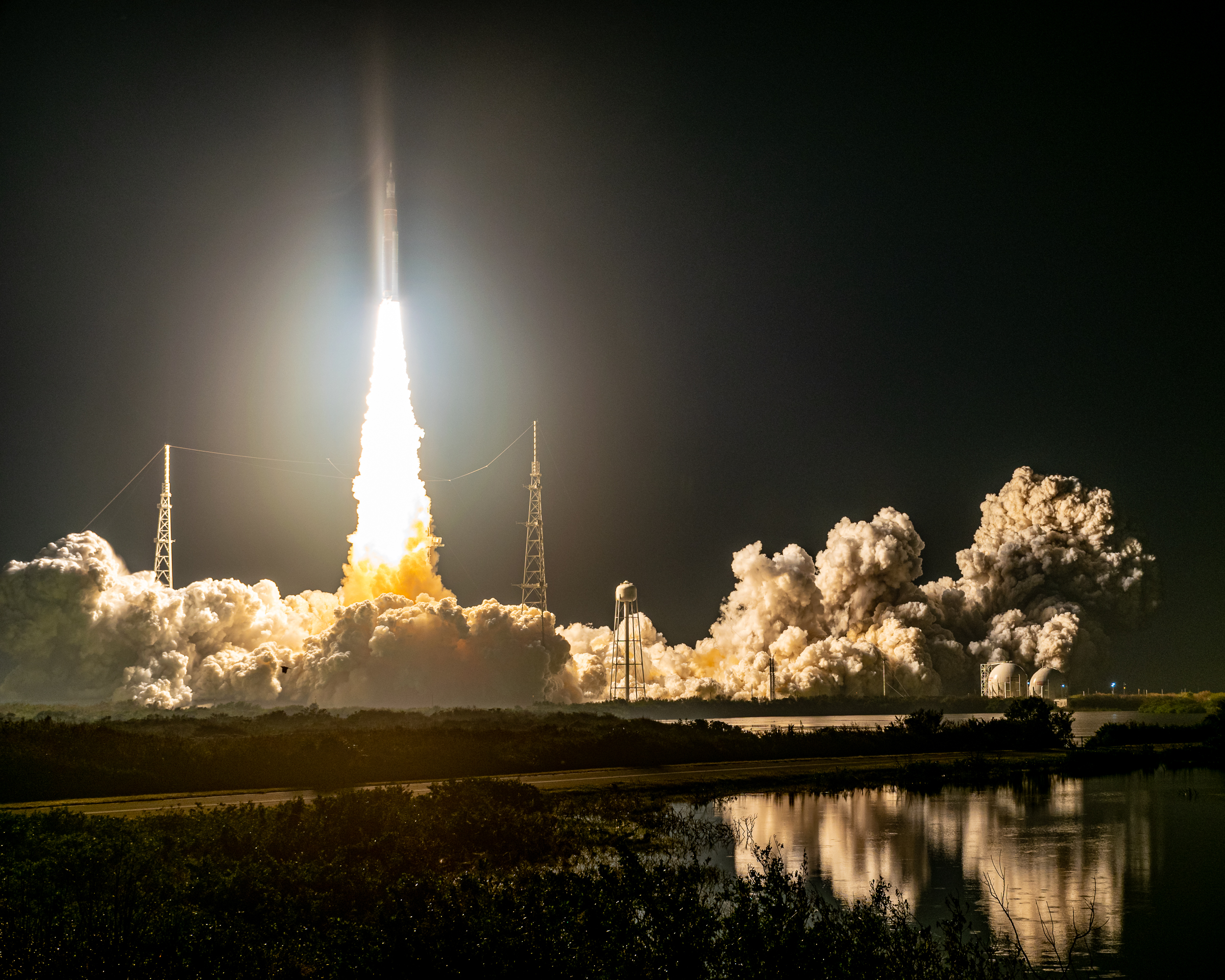
Remote camera view of Artemis 1 lifting off.
Photo Credit: John Pisani / Cosmic Perspective
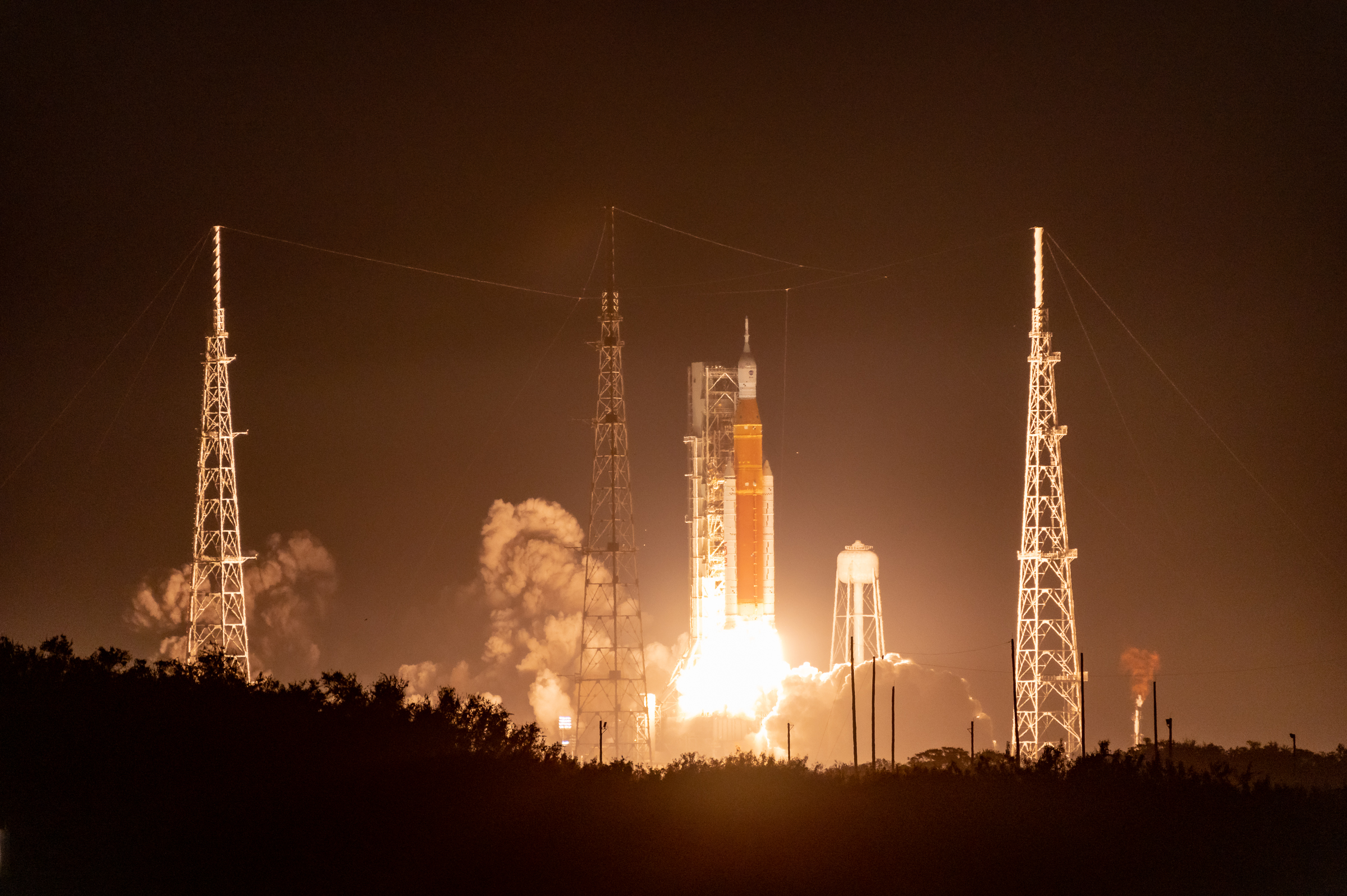
We rise together, lift off of Artemis 1 as seen from the press site
Photo Credit: John Pisani / Cosmic Perspective

From left to right: Tim Dodd, Ben Stineman, John Pisani, Cooper Hime
Image Credit: Everyday Astronaut
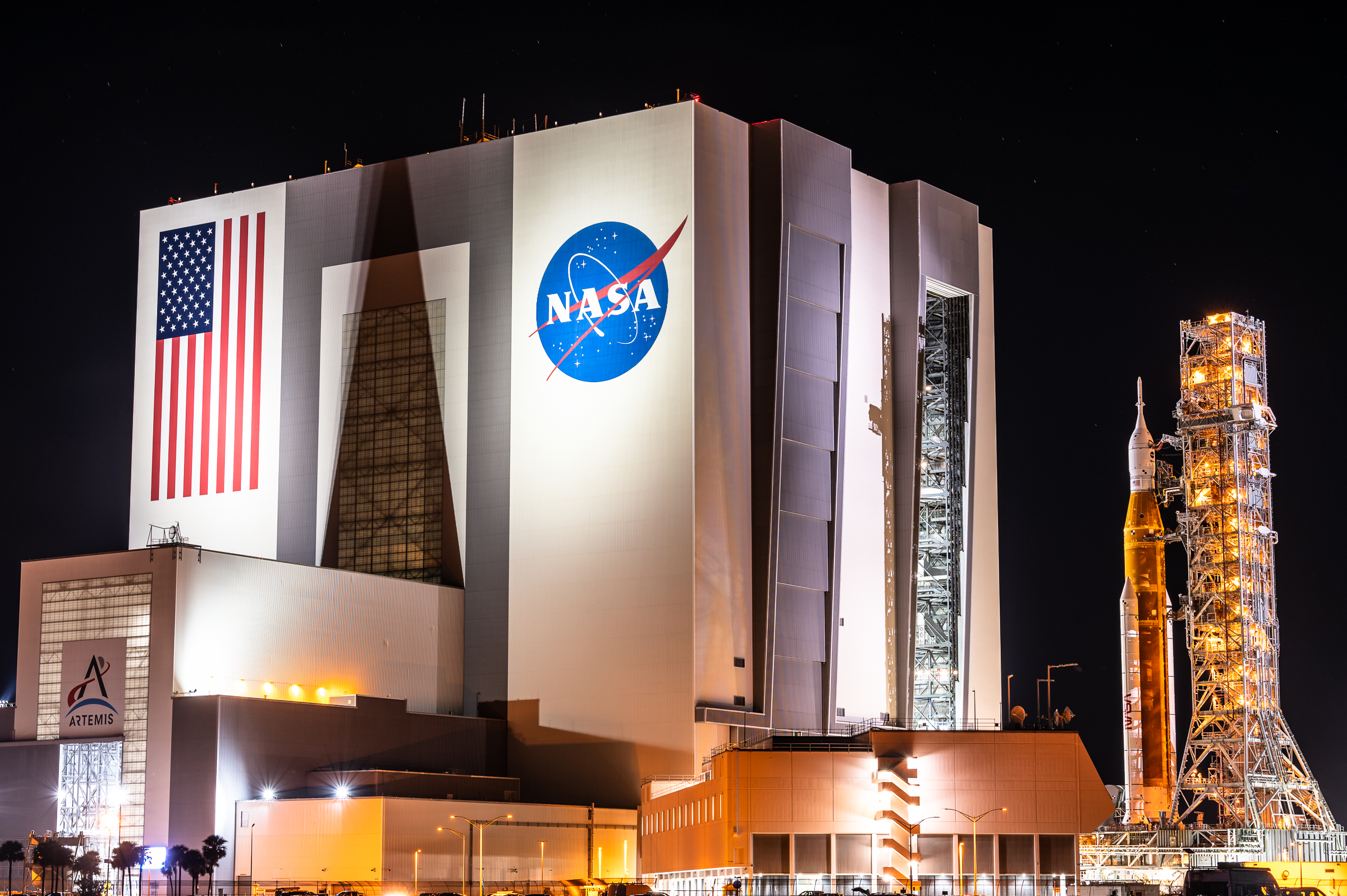
NASA’s SLS emerges from the VAB for the last time before launch.
Image Credit: John Pisani / Cosmic Perspective
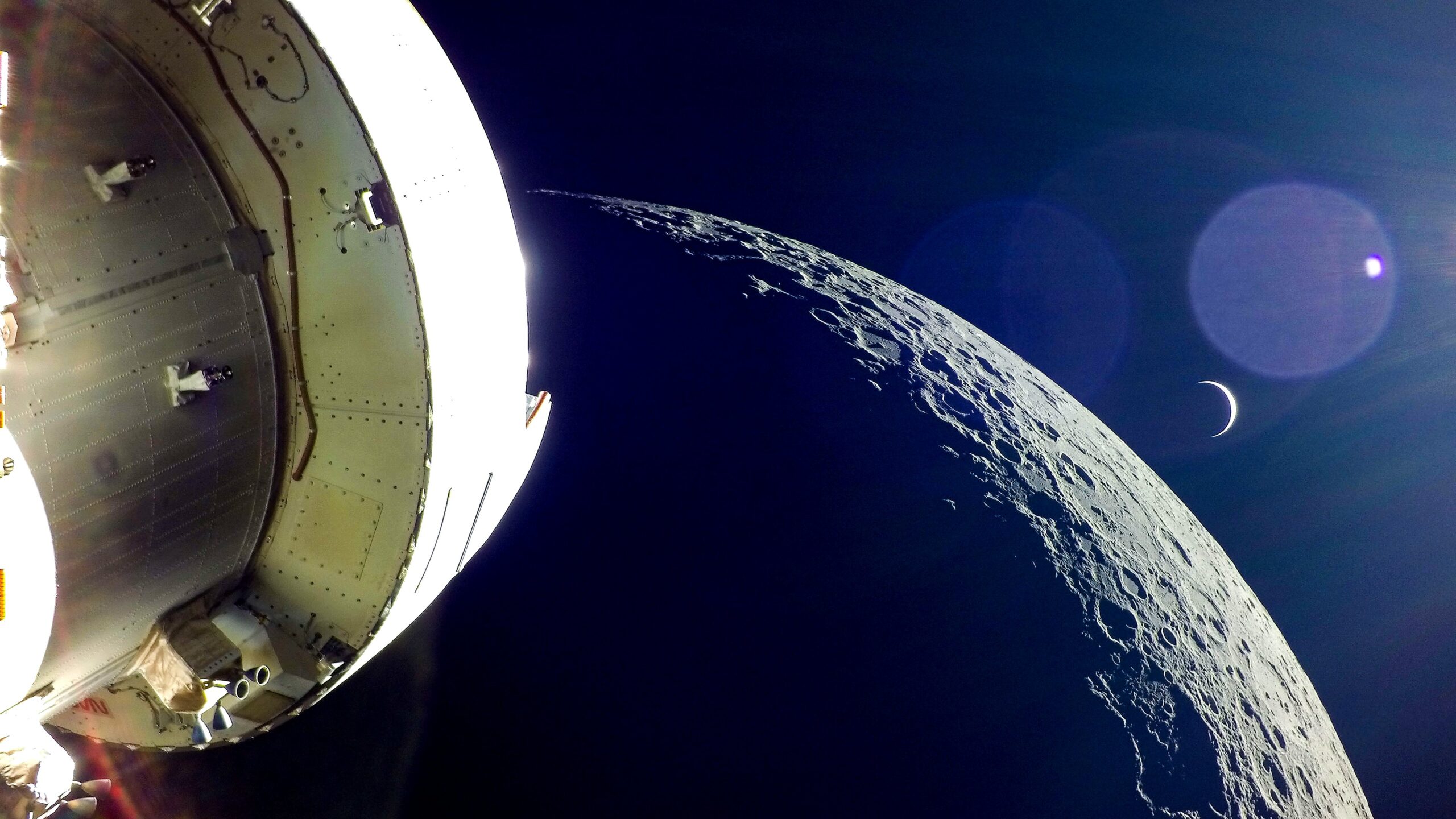
Orion, the moon and our home
Image Credit: NASA

